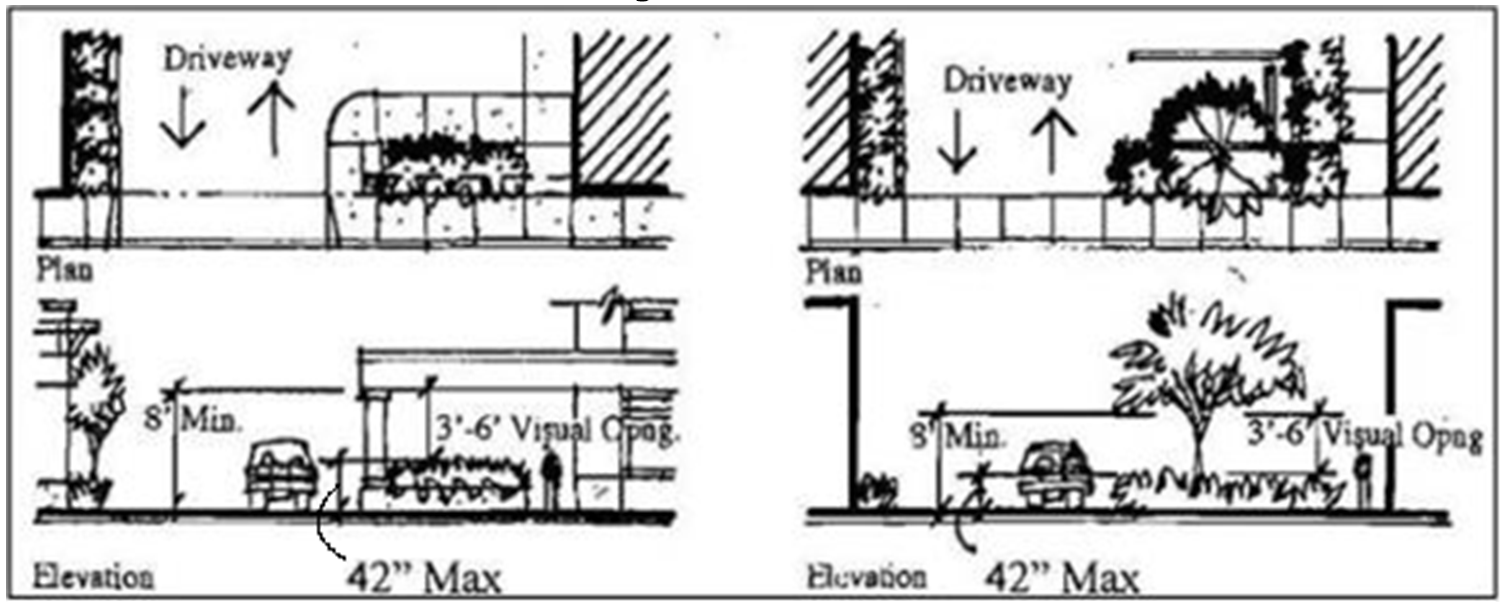20.40.160 Whatcom Community College institutional district – Landscaping.
A. Proposals for development shall satisfy all landscaping requirements for similar uses contained in BMC 20.12.030 except as provided herein.
B. Generally, the design of landscaping on campus shall take into consideration the following principles:
1. Use plantings to minimize noise and visual impacts on adjacent neighborhoods.
2. Provide street trees along campus periphery roadways.
3. Select and position landscape materials to aid in achieving energy efficiency.
4. Use native or drought-resistant plant material where appropriate.
5. Where possible, take advantage of trees to reduce cooling loads and use hedge rows or shrubbery to block cold winter winds or help channel cool summer breezes into buildings.
6. Use plant material and site design features to slow and absorb water runoff, filter sediments and facilitate water infiltration.
7. Maximize pervious surfaces that are conducive to water filtration and use natural drainage ways where possible.
8. Minimize use of herbicides, pesticides, and fertilizer through plant selection and design.
9. Minimize need for irrigation by plant selection and by grouping plant material with similar watering needs.
C. Standards. All landscaping required by this section shall be provided to the city for review and approval in a plan prepared by a licensed landscape architect.
1. Landscaping within Development. The minimum landscape requirements for every 500 square feet of landscape area within the project shall include:
|
Quantity |
Height/Size |
Type |
|---|---|---|
|
1 |
18-foot height/3-inch caliper |
Deciduous tree |
|
1 |
10-foot |
Coniferous tree |
|
1 |
8-foot |
Coniferous tree |
|
1 |
6-foot |
Coniferous tree |
|
10 |
2-gallon pot/30-inch height/spread |
Evergreen shrubs |
|
16 |
2-gallon/24-inch height/spread |
Shrubs |
2. Parking Areas.
a. Parking areas are to be landscaped to minimize the perceived area of paved surface. The area designated for parking shall devote 10 percent of that area to landscaping. A minimum of one tree is required for every eight vehicle stalls.
b. A wall or evergreen hedge designed to be maintained at a height of at least two and one-half feet and not more than three and one-half feet is required along the frontage of any street level open parking lot. Open trellis work or similar features that can be seen through may extend above the wall. Street trees with canopies above pedestrian height may be included. Planting beds must be at least five feet wide. (See Figure 20.40.160-A.)
Figure 20.40.160-A

c. A rain garden, bioswale or low-water use alternative landscaping feature may be used to screen surface parking lots, provided the planting bed is at least five feet wide and includes shrubs or grasses which can be maintained at a height between two and one-half feet and three and one-half feet the majority of the year.
3. The Street Trees. Street trees shall be installed in a double row spaced 30 feet on center adjacent to the right-of-way. Street tree species should be as follows:
a. Cordata/Westerly: scarlet oak.
b. Stuart/Kellogg loop: scarlet oak.
c. Short Street: red maple. [Ord. 2017-11-025 § 18 (Exh. I)].